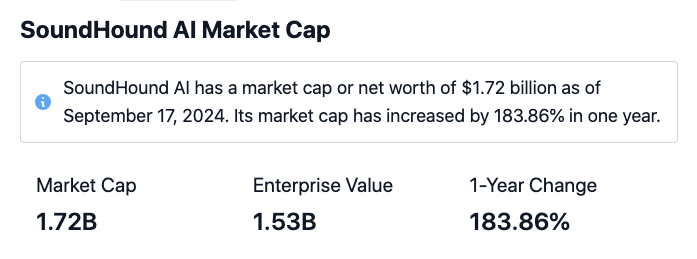20 Top Suggestions For Picking AI Stock Trading Sites
20 Top Suggestions For Picking AI Stock Trading Sites
Blog Article
Top 10 Tips When Evaluating Ai Trading Platforms Based On Their User Interfaces And Experience
The User Interface (UI) as well as the User Experience (UX) in AI trading platforms that forecast or analyze the price of stocks play an important role in ensuring efficiency and satisfaction. An undesigned interface could make it difficult to make decisions, even if the underlying AI models are robust. Below are the top ten suggestions to evaluate UI/UX.
1. Assess the ease of use as well as the intuitiveness, simplicity and ease of use.
Navigation: The platform should be simple to use. It should be clear menus, buttons, and workflows.
Learning curve - Determine the speed with which users pick up the platform and grasp it with no extensive training.
Make sure you have consistent designs (e.g. color schemes and button styles) across all platforms.
2. Make sure you check for customizability.
Dashboard customization: Determine whether the dashboard is customized to display relevant metrics charts, data, or charts.
Layout flexibility is crucial: Make sure you can alter the arrangement and size of charts, widgets, and tables.
Themes and preferences: See whether the platform provides dark and light options or other preferences for visuals.
3. Visualize Data
Chart quality: Check whether the platform provides interactive charts that can be zoomed and have panning functions (e.g. line charts and candlestick charts).
Visual clarity - Examine to ensure that data is clearly displayed using appropriate labels, legends, or tooltips.
Real-time update: Verify whether the visualizations reflect any changes on the market.
4. Test for Reactivity and Speed
Time to load: Ensure that your platform loads quickly even when you're managing large amounts of data.
Real-time performance: Determine whether the platform can handle real-time data feeds, without delay or lag.
Cross-device compatibility: Check to determine if your device is compatible with all devices (desktops and mobiles as well as tablets).
5. Assess Accessibility
Mobile app availability: Verify whether the platform is equipped with an app for mobile devices that has full capability to trade while on the move.
Keyboard Shortcuts: Check that your system supports keyboard shortcuts.
Accessibility features: Determine if the platform is compliant with accessibility standards (e.g. screen reader compatibility, high-contrast modes).
6. You can search and filter your results.
Search functionality: Make sure that the platform you use allows you to quickly search for stocks, indexes, and various other assets.
Advanced filters: Discover the existence of filters that could be applied to the results.
Saved searches - Make sure that the application allows you to save frequently used filters or searches.
7. Be sure to check for alerts and notifications.
Customizable alerts: Ensure users are able to configure alerts to specific situations (e.g. prices thresholds, spikes in volume news events).
Notification delivery: Verify whether notifications are sent via different channels (e.g. SMS, email, or notifications in-app).
Make sure to check the alerts' timing and accuracy.
8. Evaluation of Integration with Other Tools
Broker integration - Check that your platform is seamlessly integrated with your brokerage, allowing the quick execution of trades.
API access: Determine if the platform offers API access for users who are advanced to develop customized workflows or tools.
Third-party Integrations: Ensure that the platform is compatible with the other software (e.g. Excel, Google Sheets and trading bots).
9. Examine the Support and Help Features
Tutorials for onboarding Check if new users can access tutorials.
Help center. Make sure that the platform comes with an extensive help center.
Customer support: Find out if there is a responsive customer service (e.g. chat on the internet, email, or phone).
10. Test for Overall User Satisfaction
Reviews of user feedback: research reviews and testimonials to assess general user satisfaction with the platform's UX/UI.
Free trial period: Try the platform at no cost and test its functionality.
Error handling: Examine how the platform handles errors and edge cases (e.g., invalid inputs and server downtime).
Bonus Tips
Aesthetics. It is crucial to have a functional layout however, a visually pleasing layout can improve the user experience.
Performance under stress: Make sure that your platform is stable and responsive in conditions of high market volatility.
Check for active forums and communities. Users are able to share their tips and feedback in these communities.
Follow these tips to assess the UI/UX on AI stock predicting/analyzing platforms. This will ensure that they are efficient and user-friendly. Additionally, they should be aligned with trading needs. A good UI/UX can be an extremely effective tool that can assist you in making more informed decisions and make better trades. Follow the best inciteai.com AI stock app for site recommendations including ai trading software, ai copyright trading, best ai stocks to buy, stock market ai, ai stock price prediction, ai stock price prediction, incite ai, stock analysis app, trading ai bot, best ai stocks to invest in and more.
Top 10 Tips For Evaluating The Regulatory Conformity Of Ai Stock Predicting/Analyzing Trading Platforms
Regulatory compliance plays a crucial role in evaluating AI platforms for analysis and prediction of stocks. Compliance is essential since it ensures that the platform adheres to rules and legal frameworks. It also protects the user's data. Here are the top 10 ways to evaluate the regulatory compliance of these platforms:
1. Verify License and Registration
Regulatory bodies: Make sure the platform is licensed and registered with the appropriate financial regulatory bodies (e.g. SEC in U.S.A., FCA UK, ASIC Australia).
Verify broker partnerships. If the platform integrates brokers, make sure they are properly licensed and monitored.
Public records: Visit the regulator's site to find out whether the platform is registered or has any time violated the law.
2. Assessment of the Data Privacy Compliance
GDPR - If your website operates in the EU or serves users from the EU make sure that it complies with GDPR.
CCPA : California Consumer Privacy Act (CCPA) conformity should be checked by users.
Data handling policies: Go through the platform's policy on privacy and data security to ensure that it clarifies exactly what data users' information is stored, used and shared.
3. Evaluation of Anti-Money-Laundering Measures
AML policies: Ensure that the platform is equipped with strong AML policies in place to prevent and detect cash laundering.
KYC procedures. See the platform you use follows Know Your Customer processes for authenticating user identities.
Monitor transactions: Make sure that the platform monitors transactions to spot suspicious behaviour and notify authorities.
4. Check for Compliance With Trading Regulations
Market manipulation: Be sure that your platform has safeguards in place to prevent any market manipulation, including the spoofing of trading or wash trading.
Order types: Verify if the platform meets regulations regarding order types (e.g. there is no illegal stop-loss hunting).
Best execution: Verify that the platform follows best execution practices to ensure trades are executed at the highest price.
5. Assess Cybersecurity Compliance
Data encryption: Ensure that the platform safeguards users' data during its travel and also when it is in rest with encryption.
Incident response - Verify the plan of the platform to react in the event of cyberattacks or data breaches.
Certifications: Verify if the platform has cybersecurity certifications.
6. Transparency and Disclosure
Fee disclosure: Make sure the platform clearly discloses all fees, including extra or hidden charges.
Risk disclosure: Check if the platform offers clear risk disclosures, especially for high-risk or leveraged trading strategies.
Performance reporting: Ensure that the AI platform is transparent and provides exact performance information for its AI model.
7. Verify the conformity to International Regulations
International trading: If you are trading internationally, ensure that the platform you use is in compliance to all laws and regulations.
Tax reporting - Verify whether a platform offers tools and reports that will help users to comply with tax regulations.
Compliance with international sanctions: Make sure the platform strictly adheres to these rules and does not allow transactions with prohibited entities or countries.
8. Review Record-Keeping, Audit Trails
Transaction records: For compliance and auditing purposes, ensure that the platform keeps complete records of all transactions.
Logs of user activity: Check whether the platform records user activity, including transactions, logins, and modifications to account settings.
Audit-readiness: Find out if the platform is equipped to provide all necessary documents and logs to support the possibility of a regulatory audit.
9. Assess Compliance with AI-specific Regulations
Algorithmic rules of trading: If the platform supports the use of algorithms, it has to be in compliance with European regulations, such as MiFID II and U.S. Reg SCI.
Fairness and Bias: Ensure that the platform detects and reduces biases in its AI models to guarantee fair trade.
Explainability: Make sure the platform gives clear explanations for AI-driven decisions and predictions, as required by some regulations.
10. Review User Feedback and Review Regulatory History
User reviews: Study user feedback to gauge the reputation of the platform's regulator conformity.
Review the history of regulations to see if there were any penalties or fines imposed for infractions of rules.
Third-party Audits: Make sure that the platform is subject to third-party audits to ensure that the platform is conforming to all laws and regulations.
Bonus Tips:
Legal consultation: Consult with an expert in the field of law regarding the compliance of the platform with relevant laws.
Trial period: Take advantage of a no-cost demo or trial period to evaluate the compliance features available on the platform.
Customer Support: Ensure that the platform has customer support for any queries or problems related to compliance.
Follow these tips to evaluate the regulatory compliance and security of your interests. Compliance not just reduces the risk to legality, but also improves trust in a platform's service. Have a look at the top stocks ai tips for blog examples including investing in ai stocks, ai trading app, ai investing, best stock analysis website, free ai trading bot, best ai trading platform, invest in ai stocks, best stock analysis website, best free copyright trading bot, ai coin price prediction and more.